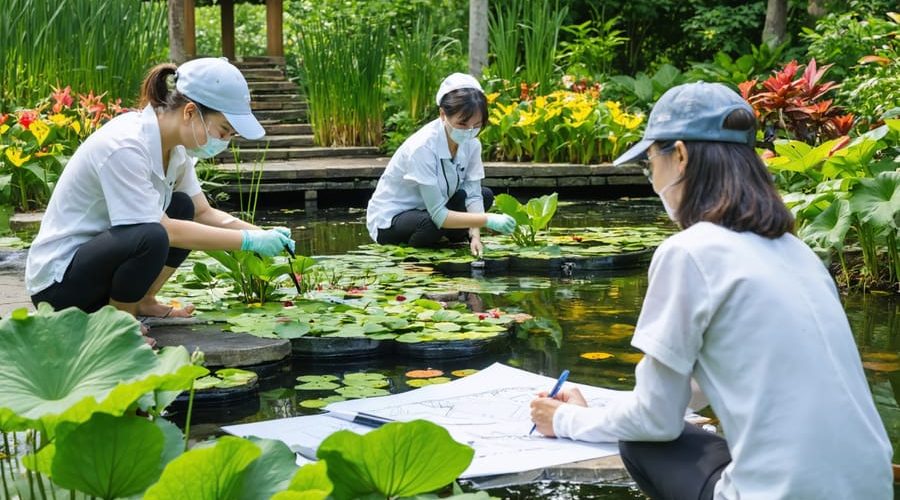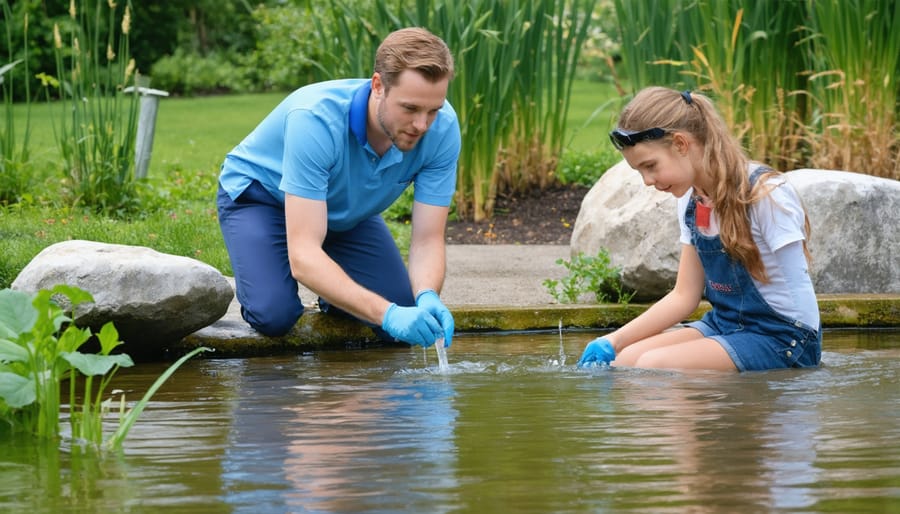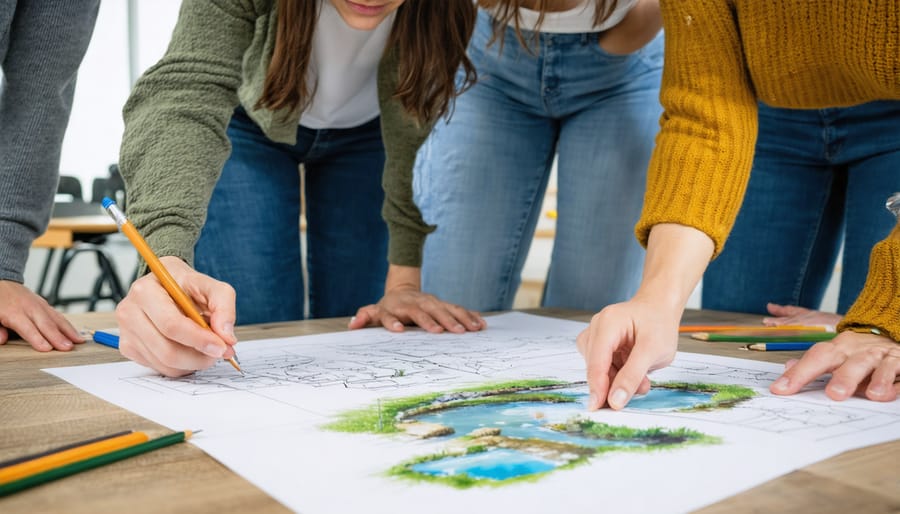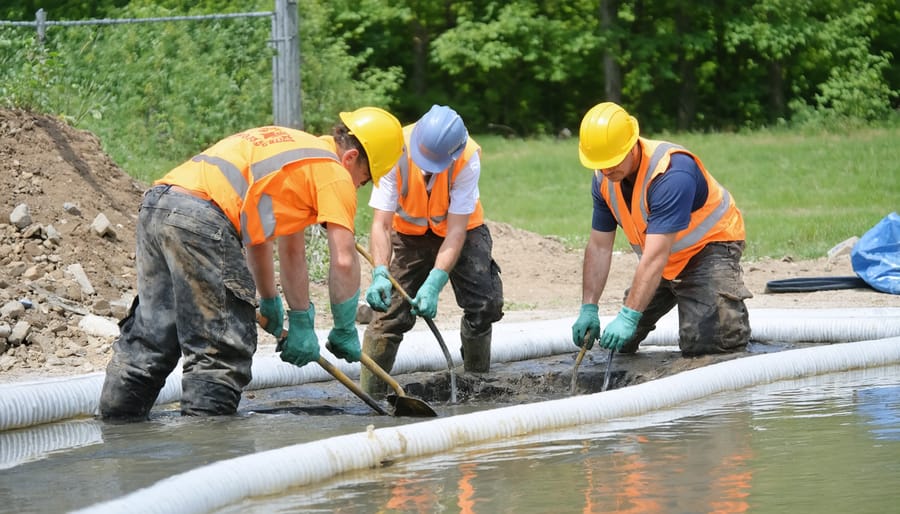
Master Water Garden Design: Hands-On Training That Actually Works
Master essential gardening skills through hands-on workshops that transform your water garden from basic to breathtaking. Professional gardening training equips you with fundamental techniques in soil preparation, plant selection, and maintenance while building confidence through practical experience. Whether you’re a complete beginner or an intermediate enthusiast, structured learning accelerates your gardening journey and helps avoid costly mistakes.
Discover the art of creating thriving gardens through expert-led sessions that blend scientific knowledge with time-tested practices. From understanding soil chemistry to mastering proper pruning techniques, quality gardening education provides the foundation for successful plant cultivation. These skills empower you to design, maintain, and troubleshoot your garden with professional expertise, turning your outdoor space into a flourishing sanctuary that reflects your vision and dedication.
Join a community of passionate gardeners who share your enthusiasm for growing and learning. Through hands-on training, you’ll gain both the technical skills and creative inspiration needed to nurture any garden to its full potential.
Essential Skills You’ll Learn in Water Garden Training
Water Chemistry Management
Water chemistry management is a crucial skill for successful water gardening. Maintaining proper water balance ensures healthy plant growth and creates a thriving ecosystem for aquatic life. Start by testing your water regularly using a basic water testing kit, which measures essential parameters like pH, ammonia, nitrites, and nitrates.
The ideal pH range for most water gardens is between 6.5 and 7.5. If your water becomes too acidic or alkaline, you can adjust it using appropriate water treatment products. Pay special attention to chlorine levels, especially when adding new water to your pond. Let tap water sit for 24 hours before use, or treat it with a dechlorinator to make it safe for plants and fish.
Algae control is another important aspect of water chemistry. Prevent excessive algae growth by maintaining proper nutrient levels and ensuring adequate filtration. Adding beneficial bacteria helps break down organic matter and maintains water clarity. During seasonal changes, adjust your maintenance routine to account for temperature fluctuations and varying plant growth rates.
Remember that a balanced ecosystem is self-sustaining. Once established, it requires minimal intervention to maintain proper water chemistry.

Plant Selection and Care
Selecting the right plants for your water garden is crucial for its success. Start with easy-to-grow varieties like water lilies, which provide beautiful blooms and surface coverage. For beginners, hardy water lilies are more forgiving than tropical varieties and can survive winter in many regions.
Consider including different plant categories: floating plants like water lettuce for surface coverage, marginal plants such as iris and rushes for the pond edges, and oxygenating plants like hornwort to maintain water quality. When choosing plants, factor in your pond’s depth, sunlight exposure, and local climate conditions.
Proper plant care involves regular maintenance tasks. Remove dead leaves and spent blooms promptly to prevent decay in the water. Most aquatic plants benefit from annual division and replanting to maintain healthy growth. Fertilize your plants using special aquatic plant tablets, following package instructions carefully to avoid overfeeding.
Watch for signs of plant stress, such as yellowing leaves or stunted growth, which might indicate nutrient deficiencies or incorrect planting depth. During winter, protect tender plants by moving them to deeper water or bringing them indoors, depending on your climate zone.
Hands-On Workshop Experience

Design Planning Sessions
Planning your water garden layout is an exciting step that brings your aquatic dreams to life. Start by sketching your garden space on graph paper, using a 1:10 scale for accuracy. Consider the natural contours of your land and identify areas that receive full sun, partial shade, or complete shade – this will influence both plant selection and pond placement.
During the design phase, think about viewing angles from your home and garden seating areas. The most successful water gardens are visible from multiple vantage points, creating different experiences as you move through the space. Factor in practical elements like power source accessibility for pumps and filters, and ensure easy maintenance access around the entire feature.
Layer your design with different heights and depths. Include shallow shelves for marginal plants, deeper sections for water lilies, and potentially a deep zone for fish if you plan to keep them. Don’t forget to incorporate surrounding landscaping – rocks, gravel, and complementary terrestrial plants will help your water feature blend naturally with the existing garden.
Consider the sound element in your design. Strategic placement of waterfalls or fountains can mask unwanted noise while creating a peaceful atmosphere. Remember to plan for seasonal changes too – some plants will die back in winter, so include permanent features like decorative rocks or sculptures that maintain visual interest year-round.
Installation Practice
During training sessions, you’ll get your hands dirty with practical construction exercises that build confidence and skill. Our instructors guide you through essential hands-on water garden projects, from basic pond liner installation to creating naturalistic waterfalls.
You’ll practice proper excavation techniques, learning how to achieve the right depth and shape for different water features. Working in small groups, you’ll master the art of positioning rocks and creating stable edges that look natural while ensuring structural integrity. Special attention is given to installing filtration systems and underwater lighting, with plenty of time to practice proper cable management and waterproofing techniques.
The training includes hands-on experience with various pumps and plumbing configurations. You’ll learn how to properly connect components, seal joints, and test systems for leaks. Plant installation is also covered extensively, with practical exercises in creating shelves and pockets for aquatic plants at different depths.
Safety is emphasized throughout the installation practice sessions, with instructors demonstrating proper tool handling and lifting techniques. You’ll also learn valuable troubleshooting skills by working through common installation challenges in a controlled environment. By the end of the training, you’ll have the practical experience needed to tackle your own water garden projects with confidence.

Skill-Sharing Benefits
Community Learning
Learning water gardening becomes more enriching when you engage with fellow enthusiasts through community learning opportunities. Group workshops and training sessions create an interactive environment where participants can share experiences, ask questions, and learn from each other’s successes and challenges.
Many gardening clubs and local communities organize regular meetups where members can exchange tips, trade plants, and troubleshoot common issues together. These gatherings often feature demonstrations by experienced gardeners, seasonal maintenance workshops, and group projects that help reinforce learned skills.
Networking within these communities can lead to lasting friendships and valuable mentorship opportunities. You might find someone with years of experience willing to guide you through your first pond installation, or connect with others who share your passion for specific water plants or fish species.
Social media groups and online forums extend these learning connections beyond geographical boundaries, allowing you to tap into a global community of water gardening enthusiasts. Whether you’re a beginner or an experienced gardener, participating in group learning environments enriches your gardening journey and provides ongoing support for your projects.
Problem-Solving Sessions
In our interactive problem-solving sessions, participants tackle real-world gardening challenges head-on. You’ll work through common scenarios like diagnosing yellowing leaves, addressing algae blooms, and managing pest infestations in water features. Each session presents a unique case study where you’ll learn to identify symptoms, analyze possible causes, and develop effective solutions.
Experienced instructors guide you through the troubleshooting process, sharing practical tips and preventive measures. You might encounter situations like sudden pump failures, water quality issues, or plant diseases that frequently puzzle garden enthusiasts. Through group discussions and hands-on demonstrations, you’ll discover how to apply systematic problem-solving approaches to various gardening dilemmas.
These sessions also include emergency response scenarios, teaching you how to handle urgent situations like leaks or filter system breakdowns. You’ll learn to create maintenance schedules and recognize early warning signs of potential problems. By the end of these sessions, you’ll feel confident in your ability to diagnose and resolve common gardening challenges independently, saving time and resources in your future gardening projects.
Finding the Right Workshop
Selecting the right gardening workshop is crucial for making the most of your learning experience. Start by honestly assessing your current skill level – are you a complete beginner who needs to learn the basics, or do you have some experience but want to expand your knowledge?
Look for workshop descriptions that clearly outline prerequisites and learning objectives. Beginners should focus on introductory courses that cover fundamental concepts like soil preparation, basic plant care, and essential tools. Intermediate gardeners might prefer specialized workshops focusing on specific techniques or plant types.
Consider the workshop format that best suits your learning style. Some people thrive in hands-on sessions where they can practice techniques directly, while others prefer detailed demonstrations and theory-based learning. Many quality workshops combine both approaches for comprehensive learning.
Time commitment is another important factor. Weekend intensives might work better for busy schedules, while weekly sessions allow more time to practice between classes. Also, check if the workshop provides take-home materials or ongoing support after completion.
Read reviews from past participants and don’t hesitate to contact organizers with questions about the curriculum. The right workshop should align with your goals, whether that’s starting a small herb garden or designing an elaborate landscape. Remember, investing time in finding the perfect match will lead to a more rewarding learning experience.
Water garden training offers an invaluable pathway to creating and maintaining your dream aquatic paradise. Through these educational experiences, you’ll gain hands-on skills, expert insights, and the confidence to tackle water gardening projects of any size. Whether you’ve learned through workshops, online courses, or hands-on demonstrations, your newfound knowledge will help you avoid common mistakes and create sustainable, beautiful water features that enhance your outdoor space.
Ready to start your water gardening journey? Consider joining a local gardening club, enrolling in a certification program, or attending upcoming workshops in your area. Remember, every expert water gardener started as a beginner, and continuous learning is key to success. With proper training and dedication, you’ll soon be designing, building, and maintaining stunning water gardens that bring joy and tranquility to your outdoor space for years to come.
